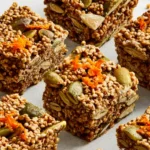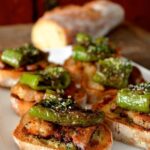Spanish cuisine offers a rich tapestry of flavors, and desserts are no exception. From creamy custards to crunchy pastries, these sweet treats highlight the country’s diverse culinary heritage.
Why are Spanish desserts so cherished worldwide? They bring together unique ingredients and traditional recipes, creating memorable experiences with every bite. Whether you’re an experienced chef or just love exploring new dishes, these 25 Spanish desserts will surely captivate your taste buds.
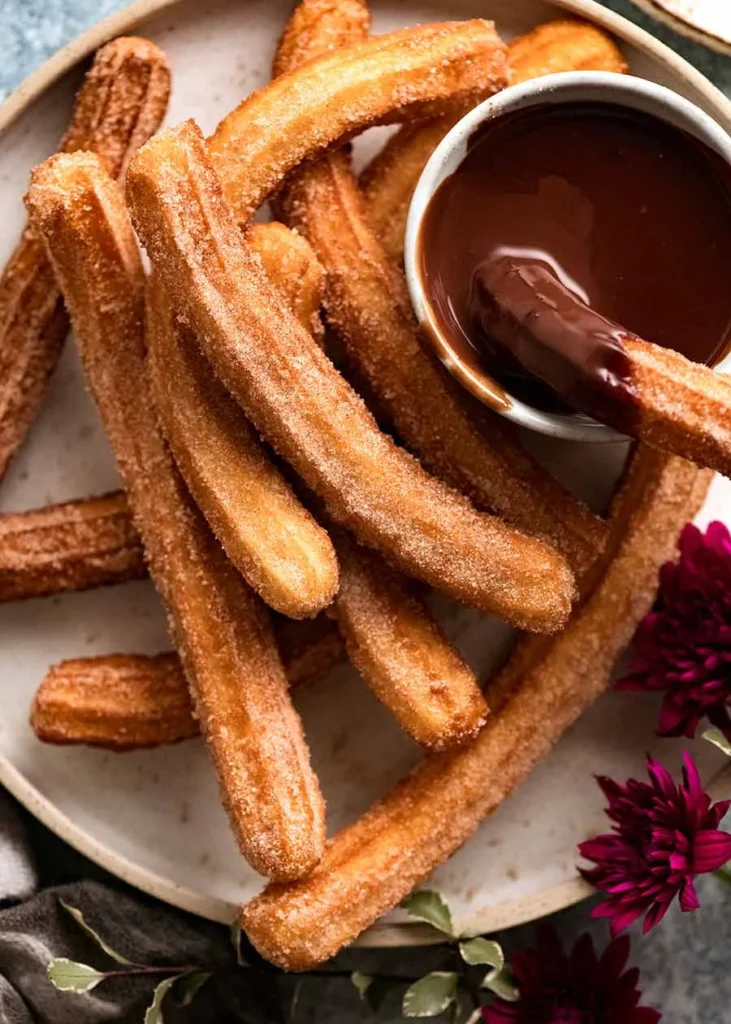
1) Churros
Churros are a popular Spanish dessert known for their crispy exterior and soft, doughy inside. They are often enjoyed with a cup of thick hot chocolate for dipping.
To make churros, you will need to prepare the dough by mixing water, flour, salt, and a small amount of oil. Heat oil in a frying pan.
Using a piping bag with a star tip, pipe the dough into the hot oil in long strips. Cut the dough close to the oil surface to avoid splashing.
Fry the churros for 2-3 minutes until they turn golden brown, flipping occasionally. Make sure they are crispy on the outside.
Once cooked, remove the churros from the oil and drain on paper towels. While still warm, roll them in a mixture of sugar and cinnamon.
Serve churros immediately with a cup of hot chocolate or your favorite dipping sauce. Enjoy the warm, sweet treat!
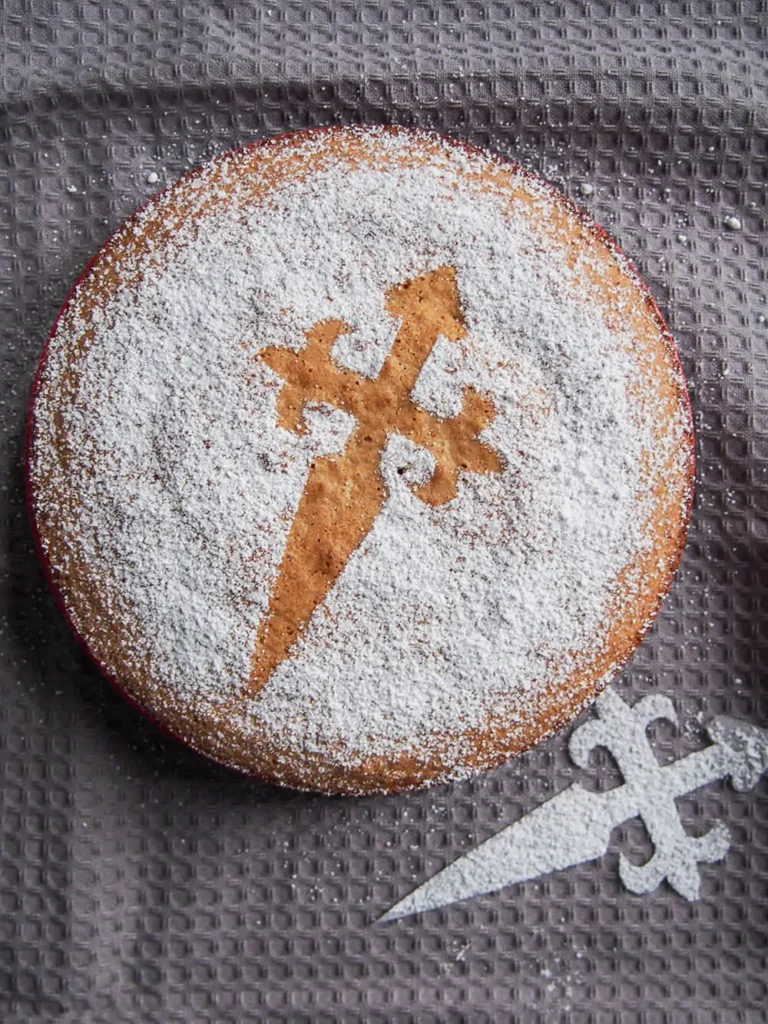
2) Tarta de Santiago
Tarta de Santiago is a traditional Spanish almond cake. It originates from the region of Galicia in Spain. This cake is known for its simple ingredients and rich flavor.
The main ingredients are almonds, sugar, eggs, lemon zest, and cinnamon. You will need to grind the almonds yourself to get the right texture. Be careful not to over-process them into almond butter.
Begin by mixing the eggs and sugar until they are pale and creamy. Add in the lemon zest and cinnamon. Then, fold in the ground almonds gently to keep the mixture airy.
Prepare your baking pan by greasing it with butter. Pour the cake batter into the pan and bake at 350°F (175°C) for about 30-35 minutes. Check if it’s done by inserting a toothpick into the center. Once it comes out clean, the cake is ready.
Let the cake cool on a rack before serving. It is traditionally decorated with a powdered sugar stencil of the Cross of Saint James. This decoration adds a historical touch to the dessert.
Tarta de Santiago is perfect for celebrations or as a special treat. Its nutty flavor and light texture make it a favorite in Spanish households.
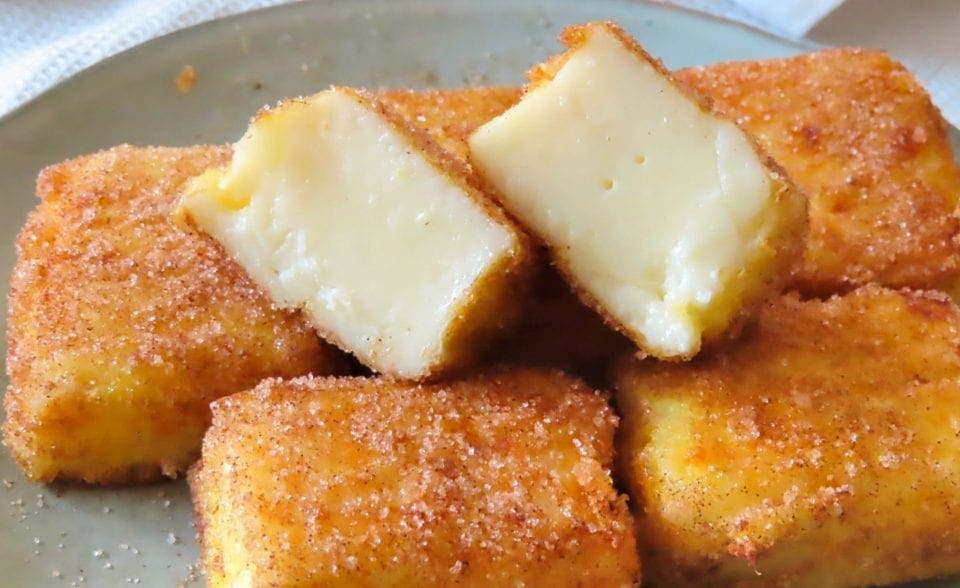
3) Leche Frita
Leche Frita, or “Fried Milk,” is a popular Spanish dessert. It’s known for its creamy texture inside and crispy coating outside.
To make Leche Frita, start by heating milk with cinnamon sticks and lemon peels. This infuses the milk with aromatic flavors. Next, mix some milk and cornstarch to create a thick mixture.
Combine the flavored milk with the cornstarch mixture and cook until it thickens into a creamy consistency. Pour this mixture into a dish to cool and set. Once set, cut the milk mixture into squares.
Dredge each milk square in flour, then fry in hot oil until golden brown and crispy on the outside. Finally, roll each piece in a mixture of sugar and cinnamon. This adds a sweet and spicy touch.
Leche Frita is typically served warm. You can also add a scoop of ice cream for extra indulgence. This dessert offers a delightful contrast between its crispy exterior and its smooth, creamy center. With its simple ingredients and straightforward process, Leche Frita is a delightful treat you can make at home.
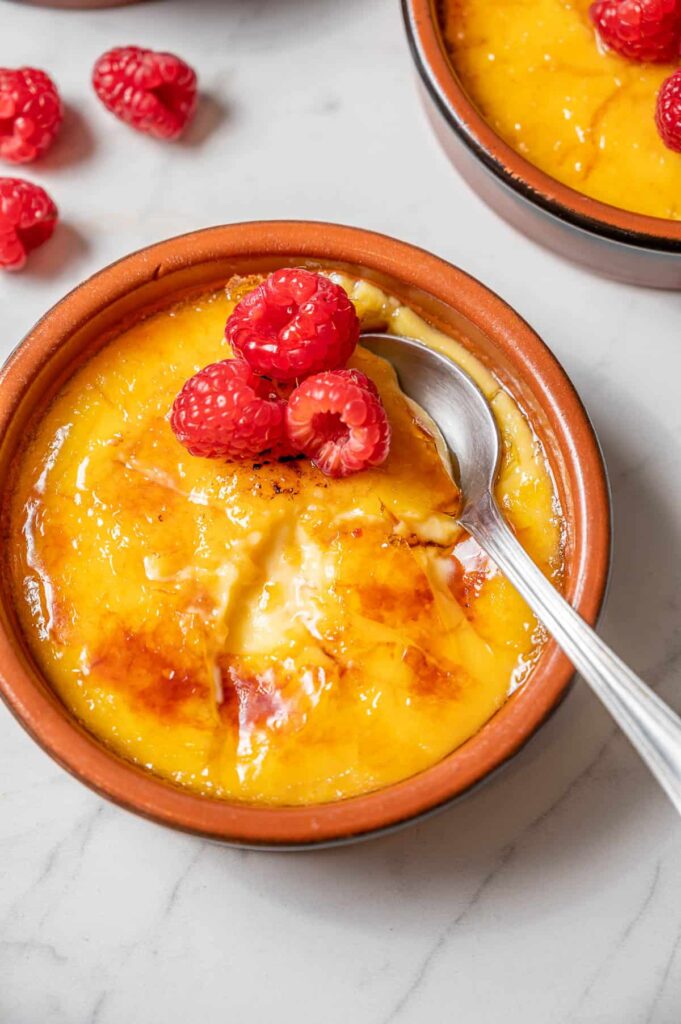
4) Crema Catalana
Crema Catalana is a classic Spanish dessert. It is similar to crème brûlée but has its own unique twist. You make this custard with milk, sugar, egg yolks, cornstarch, and a touch of cinnamon and citrus.
To start, add milk, cinnamon sticks, and lemon peel to a pot. Bring it to a boil, then lower the heat. Let it rest for a few minutes. In a bowl, mix cornstarch, sugar, egg yolks, and vanilla extract.
Slowly heat the milk mixture and remove the citrus peels and cinnamon stick. Pour some warm milk into the egg mixture while whisking constantly. Then, slowly whisk it back into the pot with the remaining milk.
Continue heating the mixture over medium-low heat. Whisk constantly until the custard thickens and starts to simmer. Once it thickens, strain it to remove any lumps, then pour it into individual serving dishes.
Let the mixture cool down completely. Before serving, sprinkle a thin layer of sugar on top and caramelize it with a kitchen torch. The result is a creamy custard with a crisp, caramelized topping.
Crema Catalana is perfect for any occasion. You will love its smooth texture and rich flavor.
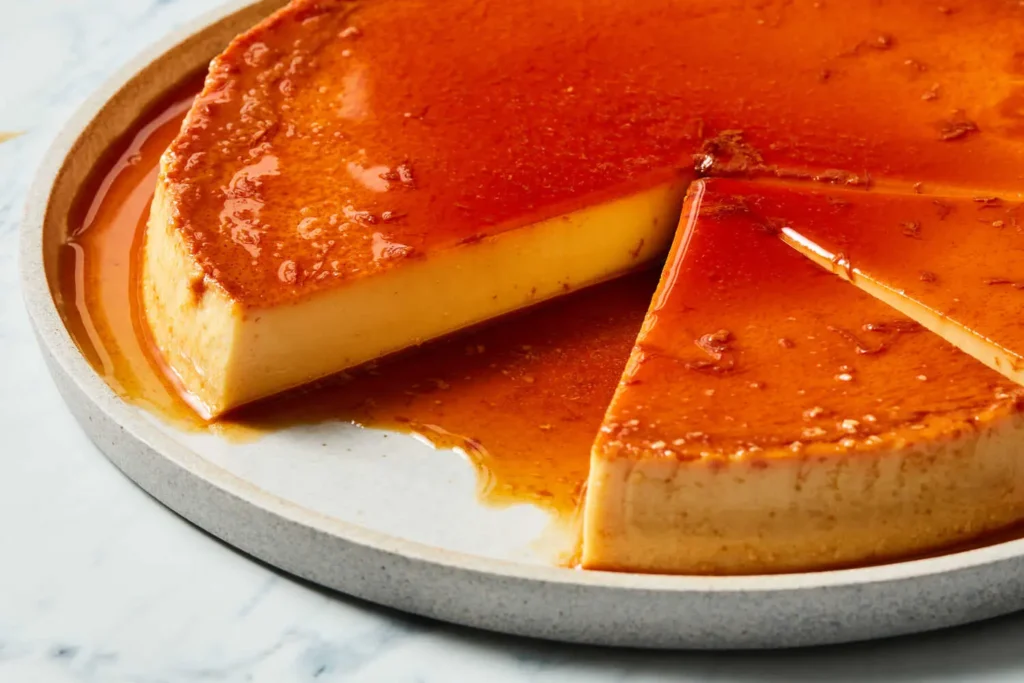
5) Flan
Flan is a classic Spanish dessert known for its smooth, creamy texture and rich caramel flavor.
To make flan, start by melting sugar over medium-low heat until it becomes golden caramel. Pour this caramel into the bottom of your baking dish.
Then, in a large mixing bowl, whisk together eggs, sugar, milk, and vanilla until smooth. The eggs should be at room temperature for best results.
Pour the mixture over the caramel in the baking dish. Place the dish in a larger pan filled with hot water. This water bath helps the flan cook evenly.
Bake the flan in a preheated oven at 350°F until it’s set, about 50-60 minutes. The flan should be firm but still slightly wobbly in the center.
After baking, let the flan cool to room temperature. Then, refrigerate it for a few hours or overnight to let it fully set.
To serve, run a knife around the edges of the flan and invert it onto a plate. The caramel will create a delicious sauce over the top.
Enjoy your homemade flan as a delightful and creamy Spanish treat.
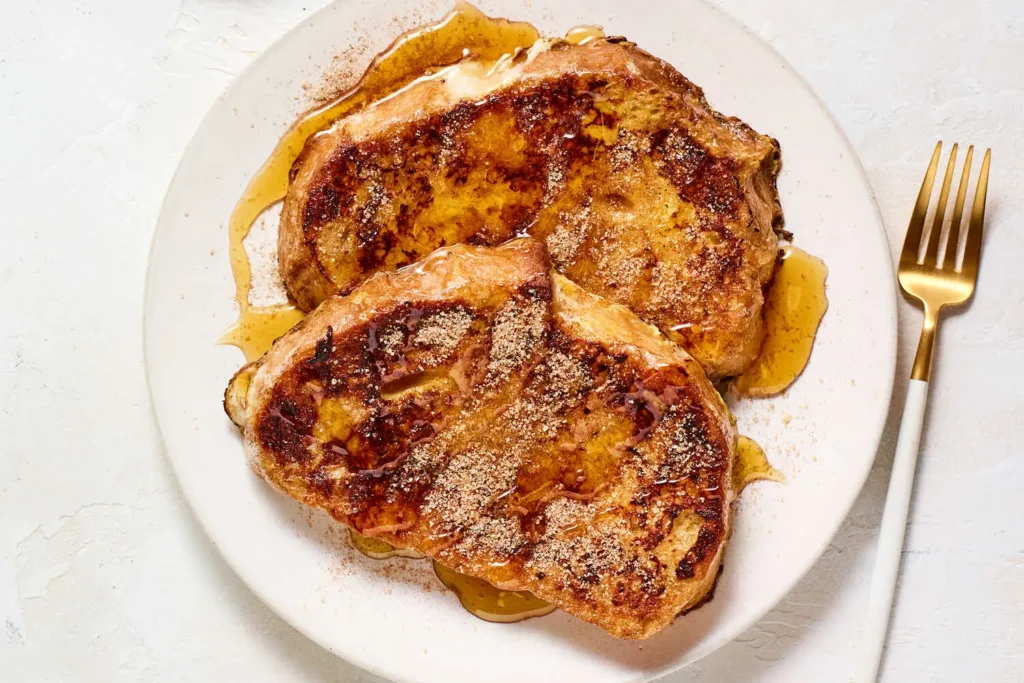
6) Torrijas
Torrijas are a traditional Spanish treat similar to French toast. They are usually made during Lent or Easter.
To make torrijas, you start with thick slices of stale bread. The bread is soaked in a mixture of milk flavored with vanilla and cinnamon.
Next, you dip the soaked bread in beaten eggs. This gives torrijas a rich, creamy texture once fried.
Heat some olive oil in a pan until it’s hot. Fry the bread slices until they are golden brown on both sides.
After frying, place the torrijas on paper towels to remove excess oil. Then, sprinkle them with a mixture of sugar and cinnamon.
Sometimes, torrijas are served with a sweet syrup. This syrup is made by boiling sugar, water, and honey until it thickens.
Torrijas have a sweet, crispy outside and a soft, custardy inside. They are often enjoyed warm, but you can also serve them cold.
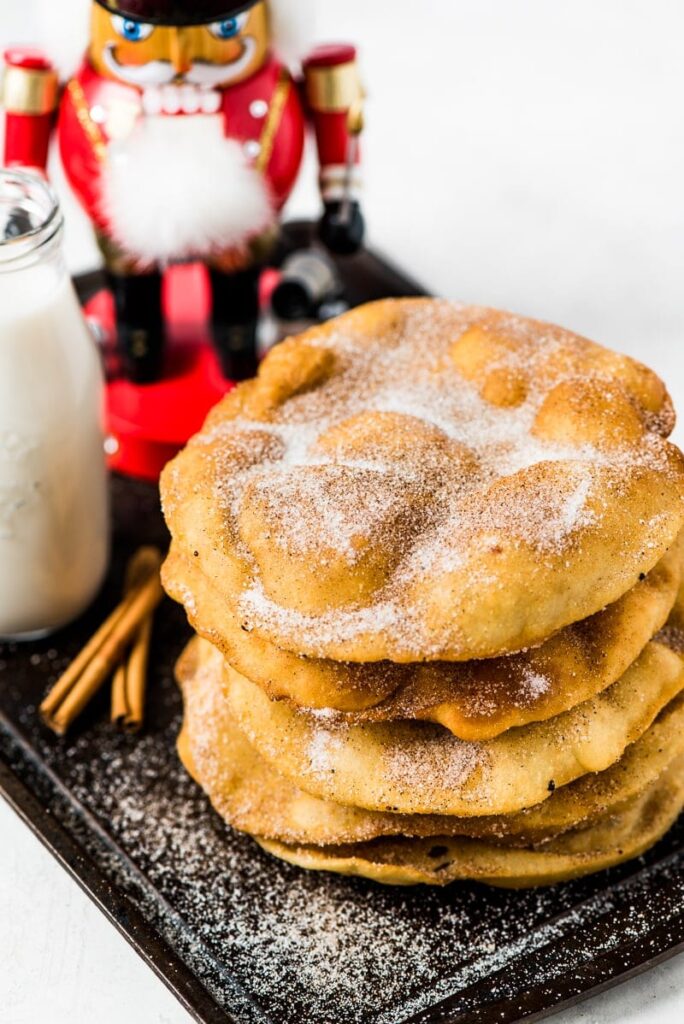
7) Buñuelos
Buñuelos are fluffy, deep-fried pastries enjoyed across Spain. They are a popular treat during holidays and festivals.
To make buñuelos, start by combining water, butter, sugar, and lemon zest in a saucepan. Bring this mixture to a boil. Then, add the flour and baking powder all at once and stir vigorously until the dough pulls away from the sides of the pan.
After the dough cools slightly, beat in the eggs one at a time. This step ensures a smooth and elastic dough. Some recipes suggest using an electric mixer to make this process easier.
Once your dough is ready, heat oil in a deep pan. Drop small spoonfuls of dough into the hot oil, frying them until they are golden brown. Make sure to turn them so they cook evenly.
When the buñuelos are done, drain them on paper towels to remove excess oil. You can then roll them in sugar or drizzle them with honey for added sweetness.
These delightful fritters can be enjoyed on their own or as a dessert with a cup of coffee. Buñuelos are light, airy, and often flavored with hints of lemon, making them a charming treat for any occasion.
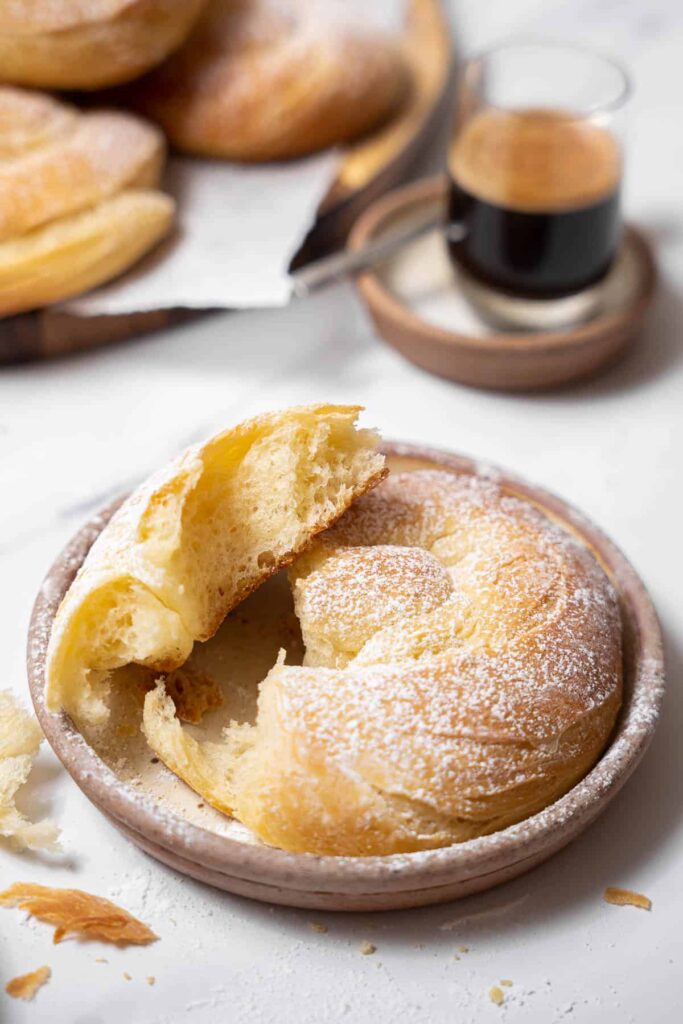
8) Ensaimada
Ensaimada is a sweet bread from Mallorca, Spain. It’s a spiral-shaped pastry often enjoyed with a cup of coffee or hot chocolate. This treat has a soft and flaky texture.
The dough for ensaimada is made with flour, sugar, eggs, and yeast. You let the yeast mixture sit until it becomes foamy. This usually takes about 5-10 minutes.
You then mix the yeast with the flour and other ingredients to form a dough. Knead the dough until it’s smooth and stretchy. This can take around 15 minutes.
Once the dough is ready, it’s shaped into a spiral. The pastry is then allowed to proof, or rise, for several hours. This helps the dough become airy and light.
After proofing, you bake the ensaimada in the oven until it’s golden brown. The result is a delicious, fluffy pastry. Some variations include fillings, like custard or sweet meats.
Ensaimada is a cherished dessert in Spain, especially in Mallorca. It’s a must-try if you ever visit the region. Its unique shape and delightful taste make it unforgettable. Don’t miss out on this traditional Spanish delight!
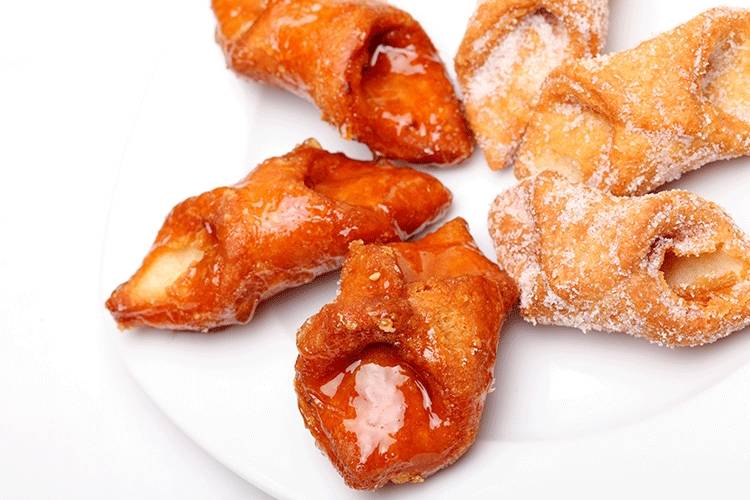
9) Pestiños
Pestiños are a popular Spanish dessert, especially around Christmas and Easter. These sweet fritters are known for their crispy texture and honey glaze.
To make pestiños, you start by preparing the dough. Mix flour, white wine, and olive oil until smooth. Add spices like cinnamon and aniseeds for more flavor. Roll the dough out thinly and cut it into small strips.
Heat vegetable oil in a deep pan to about 350°F (180°C). Fry the dough strips in batches. Cook them for a couple of minutes on each side until they turn golden brown.
Once fried, drain the pestiños on paper towels to remove extra oil. To glaze them, heat honey with a bit of lemon juice and water until smooth. Toss the pestiños in the honey glaze until fully coated.
Serve your pestiños warm or at room temperature. Their sweet and aromatic taste makes them a delightful treat to enjoy with family and friends.
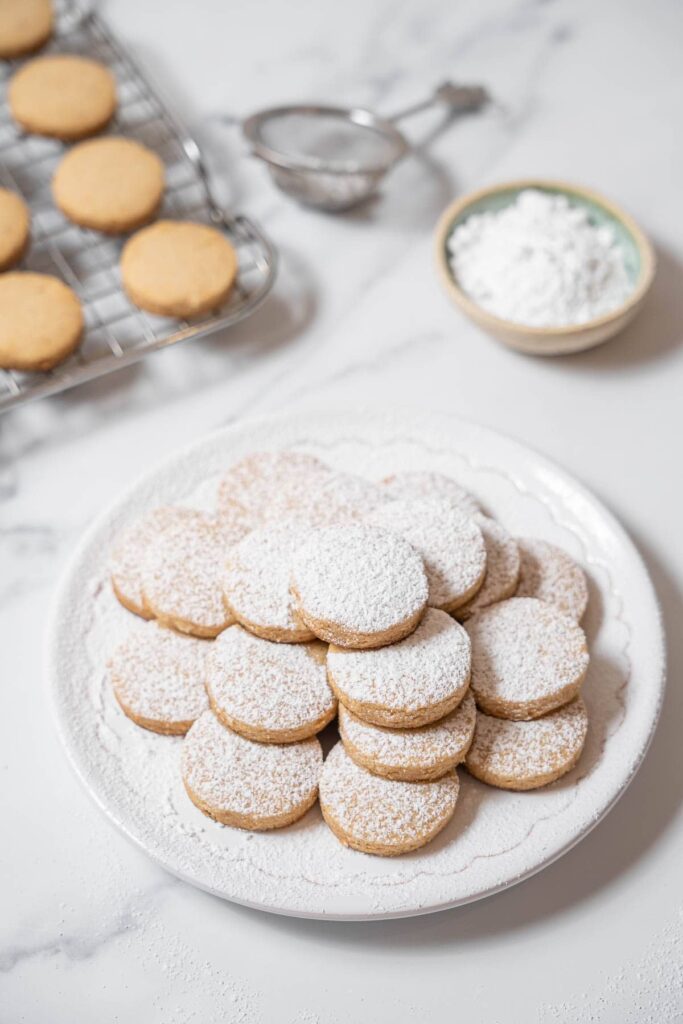
10) Polvorones
Polvorones are traditional Spanish almond cookies that are especially popular during the Christmas season. These crumbly sweets have a rich history in Spain and are often enjoyed with a warm beverage.
To make Polvorones, you’ll need almond flour, all-purpose flour, lard or butter, sugar, and a touch of cinnamon.
You start by toasting the flour, which gives the cookies their unique flavor. You can do this in the oven or on the stove.
Next, beat the lard or butter with sugar until smooth. Mix in the toasted flour and almond flour until you get a crumbly dough.
Form the dough into a log, wrap it in film, and refrigerate for at least two hours. After chilling, cut the dough into thick slices.
Bake the slices in a preheated oven at about 350°F (180°C) for ten minutes. Once done, let them cool completely. Dust with icing sugar and more cinnamon if desired.
Polvorones have a melt-in-your-mouth texture and a delicate almond flavor. They are a beloved treat in Spanish households and a wonderful addition to any dessert table.
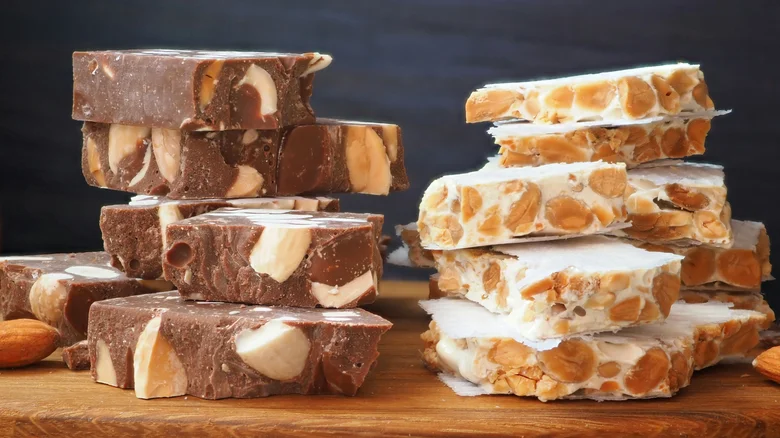
11) Turrón
Turrón is a popular Spanish dessert, especially during Christmas. It is a type of nougat and has two main varieties: Turrón de Alicante and Turrón de Jijona.
Turrón de Alicante is a hard version made from whole almonds, honey, sugar, and egg whites. It has a crunchy texture that many people love. You often see it in rectangular bars with a wafer paper backing.
Turrón de Jijona, on the other hand, is soft. It uses the same basic ingredients but the almonds are ground into a paste, giving it a smoother texture. This version tends to be more chewy and easier on the teeth.
The origins of turrón date back to centuries ago. It’s believed to have been brought to Spain by the Moors. Over time, it became a staple during the holiday season.
To make turrón at home, you typically roast the almonds first. Then, mix them with honey, sugar, and egg whites. The mixture is poured into molds, often lined with wafer paper, and left to harden.
Turrón comes in many other flavors now, including chocolate and various nuts. Yet, the classic almond versions remain favorites. Whether you prefer the hard or soft type, turrón is a must-try for anyone wanting to experience traditional Spanish sweets.
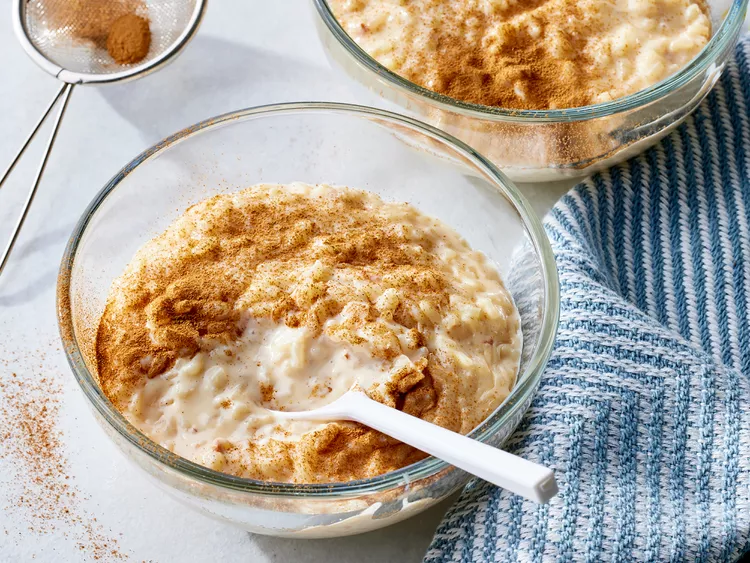
12) Arroz con Leche
Arroz con Leche, or Spanish rice pudding, is a beloved dessert in Spain. It’s creamy, sweet, and flavored with cinnamon and citrus. You can find it in many Spanish households and restaurants.
To make Arroz con Leche, start by rinsing your rice until the water runs clear. This removes excess starch. Then, in a saucepan, combine the rice with water, a cinnamon stick, and lemon rind.
Cook the rice over medium heat until it absorbs the water. Then, add warm milk gradually, stirring often. This keeps the texture smooth and creamy. Some recipes also use orange peel for extra flavor.
Once most of the milk is absorbed and the rice is tender, remove the citrus peels and cinnamon stick. Stir in sugar until it dissolves completely.
Let the pudding cool a bit before serving. You can enjoy it warm or cold, and it’s often sprinkled with ground cinnamon on top. Arroz con Leche is simple, yet a comforting dessert that highlights the classic flavors of Spain.
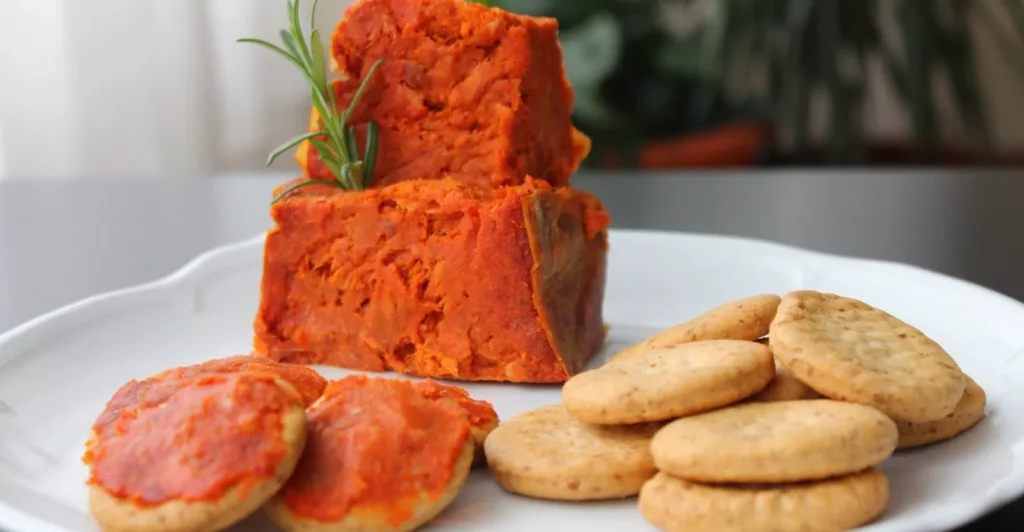
13) Mallorcan Sobrasada
Mallorcan Sobrasada is a type of cured sausage from the Balearic Islands. This treat is made from ground pork, seasoned with salt, spices, and paprika. The paprika gives Sobrasada its distinctive red color.
The sausage is traditionally cured for several weeks. During this time, the flavors develop, and the texture becomes smooth and spreadable.
You can enjoy Sobrasada in many ways. Spread it on bread or toast, use it as a filling for pastries, or even bake it into dishes like flatbreads.
Sobrasada pairs well with honey for a sweet and savory combination. It’s also a key ingredient in many traditional Mallorcan recipes.
If you visit Mallorca, make sure to try Sobrasada. It’s a delicious way to experience the island’s culinary heritage.
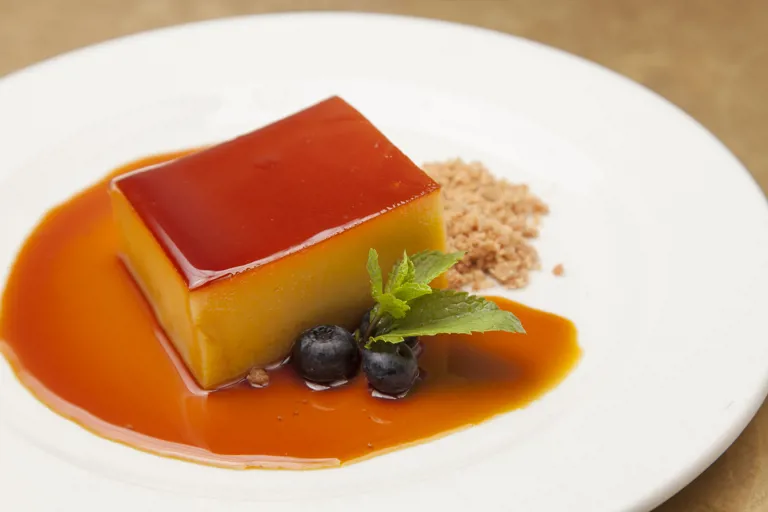
14) Tocino de Cielo
Tocino de Cielo is a classic Spanish dessert made from egg yolks, sugar, and water. This dessert’s name translates to “heaven’s bacon,” but it has nothing to do with pork. Instead, it’s a smooth, rich egg custard with a caramel topping.
To start, you will need to make the caramel. Combine sugar and water in a pan and cook until it turns golden brown. Carefully pour this caramel into individual molds.
Next, prepare the egg yolk mixture. Mix egg yolks with a simple syrup made from sugar and water. Strain the mixture to ensure a smooth texture.
Place the filled molds in a water bath, also known as a bain-marie, and bake at low heat until set. This usually takes around 20-30 minutes, depending on your oven.
Once baked, let it cool before removing from the molds. The result is a glossy, sweet treat with a luxurious texture. It’s a must-try for any fan of Spanish desserts.
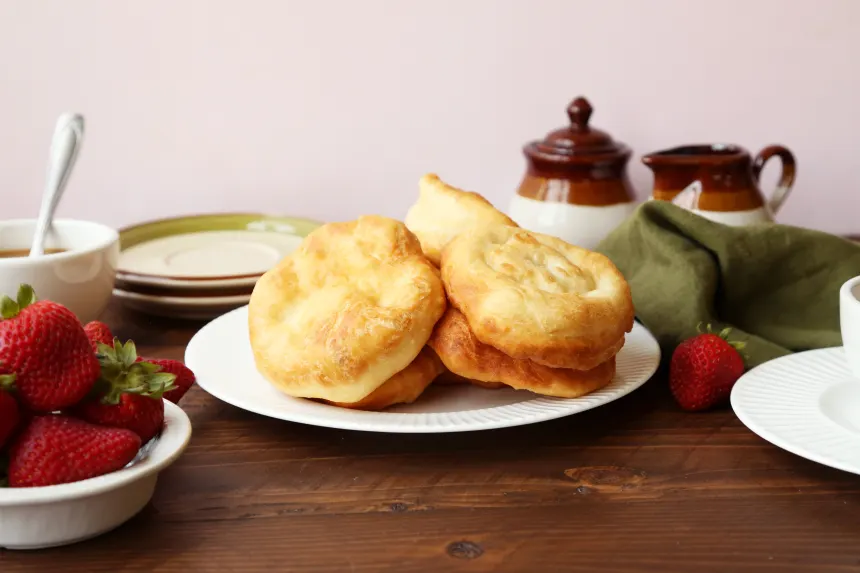
15) Hojaldres
Hojaldres are a popular fried bread from Panama. They are similar to doughnuts but without a hole in the center. Hojaldres are often enjoyed as a breakfast treat or a snack.
You start by mixing flour, salt, baking powder, and sugar in a large bowl. Then, you add butter or oil and gradually pour in water to form a dough.
Once the dough comes together, roll it out on a lightly floured surface. Cut the dough into small circles or squares. Fry them in hot oil until they turn golden brown and puff up.
Hojaldres taste best when served warm. You can sprinkle them with powdered sugar or honey for extra sweetness. They are crispy on the outside and soft on the inside, making them a delightful treat.
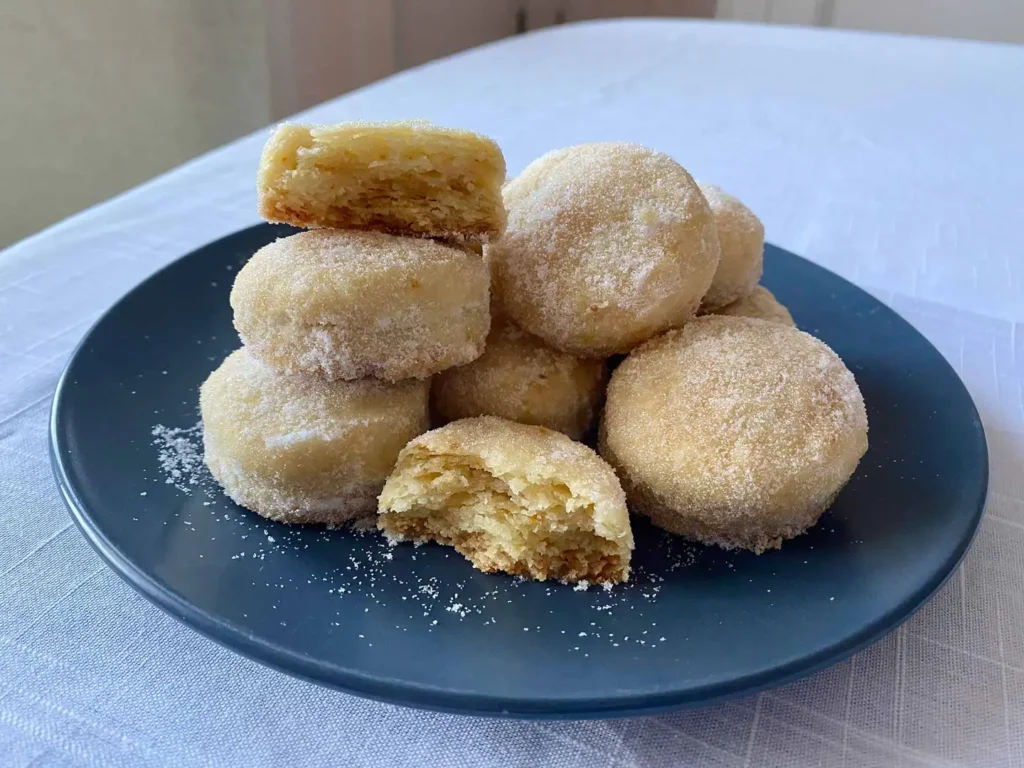
16) Mantecados
Mantecados are traditional Spanish shortbread cookies that are especially popular during the Christmas season.
You start by preheating your oven to 325°F (163°C). Then, in a large bowl, beat together vegetable shortening or butter, olive oil, and sugar. Once smooth, add an egg and some lemon zest.
Next, you’ll want to squeeze the juice from half a lemon into the mixture. Gradually add flour to the bowl. Mix until the dough takes shape.
Let the dough rest in the fridge for about 30 minutes. After that, take it out and roll it to about 1 cm thickness. Cut the dough into rounded shapes.
Place your cut cookies onto a greased or parchment-lined baking tray. Bake in the oven for 15 to 20 minutes.
When they’re done, they should have a golden color. After cooling, you can coat them in powdered sugar for an extra touch of sweetness.
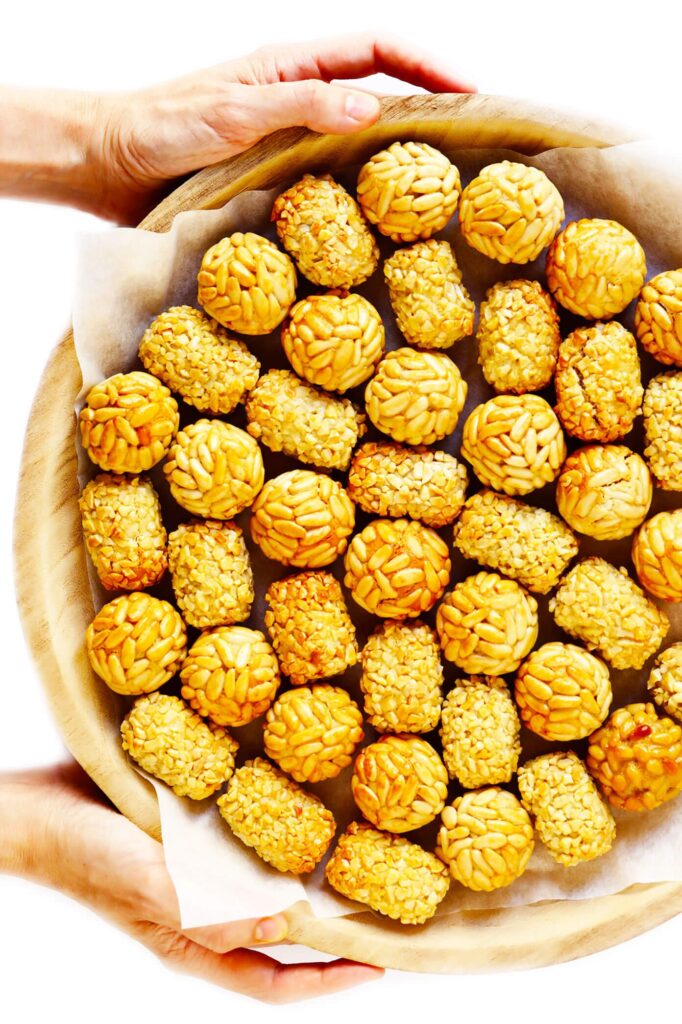
17) Panellets
Panellets are a cherished Spanish dessert, especially popular in Catalonia. These small, almond-based sweets have a soft texture and a rich, nutty flavor. They are traditionally enjoyed during the All Saints’ Day celebrations.
To make Panellets, you need ground almonds, granulated sugar, and egg yolks. Some recipes suggest adding lemon zest for extra flavor. The mixture is formed into small balls, which are often coated in pine nuts or powdered cocoa.
Preheat your oven to around 380°F (190°C) and prepare a baking tray with parchment paper. After forming the dough into balls, place them on the tray and bake until golden.
You can also experiment with different coatings. Pine nuts and powdered cocoa are classic choices, but you might try shredded coconut or crushed nuts for a unique twist. After baking, let them cool completely before serving.

18) Neules
Neules are a delightful treat from Spain, specifically Barcelona. These light and crispy wafers are traditionally enjoyed during the Christmas season.
You prepare the batter much like you would for pancakes. Use a pizzelle maker to cook the batter one tablespoon at a time.
Once they come off the iron, quickly roll them into a cigar shape while they’re still warm. This gives them their signature look.
Neules are often served plain, but you can dip them in chocolate or fill them with whipped cream. These variations add an extra touch of sweetness to your dessert table.
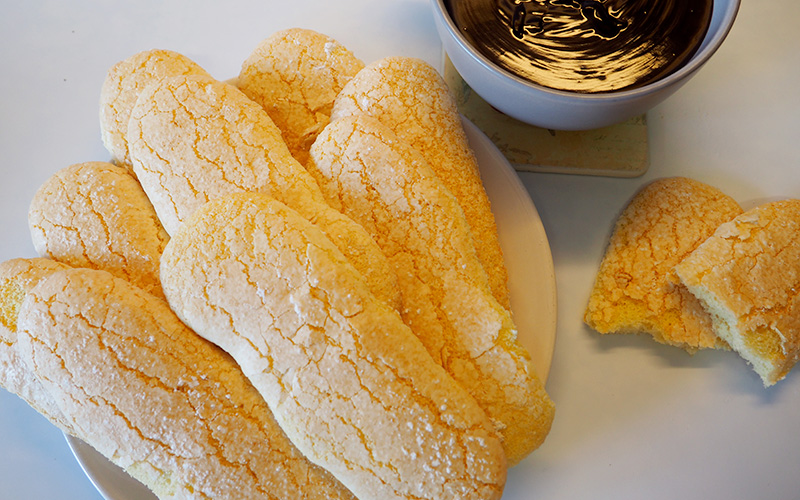
19) Melindros
Melindros are light, airy sponge biscuits from Spain. They are similar to Italian ladyfingers but have a unique touch. You usually eat them dipped in hot chocolate or coffee.
These biscuits have a soft texture. They are made from basic ingredients like eggs, sugar, and flour. Often, they are dusted with powdered sugar before serving.
Melindros are a favorite for breakfast or a snack. They are also used in traditional desserts like tiramisu. Because of their simple flavor, they pair well with many foods.
You can make melindros at home with just a few ingredients. Once baked, they should be stored in an airtight container to keep them fresh. Enjoying them fresh ensures the best texture and taste.
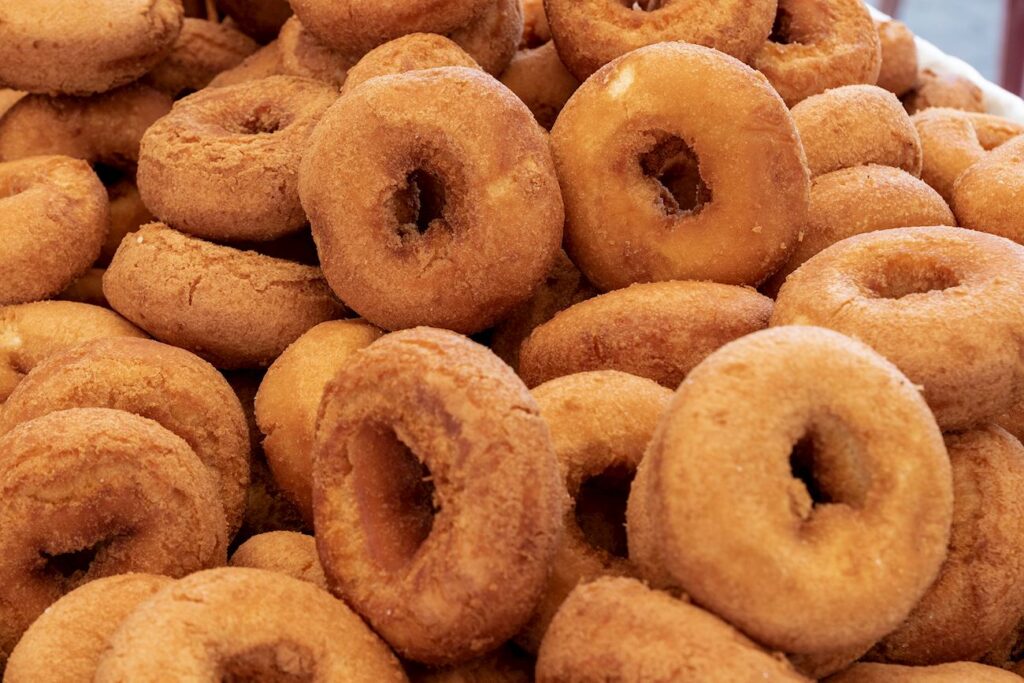
20) Rosquillas
Rosquillas are traditional Spanish donuts with a rich history. These treats are deep-fried and have a fluffy texture. They are especially popular during Holy Week celebrations.
To make rosquillas, you mix eggs, sugar, milk, oil, lemon zest, flour, and baking powder. You form a dough, shape it into rings, and fry until golden brown.
After frying, you can coat them in a mix of ground sugar and cinnamon. This adds a sweet and spicy flavor that many people love. Enjoying rosquillas with a cup of coffee is a delightful way to experience Spanish cuisine.
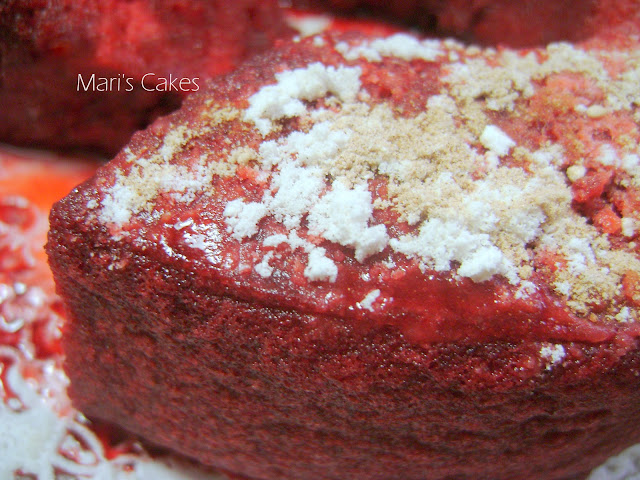
21) Bizcochos Borrachos
Bizcochos Borrachos, also known as Drunken Sponge Cakes, are a delightful Spanish dessert soaked in a sweet syrup made with wine or liquor.
To make Bizcochos Borrachos, you start by separating egg yolks from the whites. Beat the yolks with sugar until the mixture is creamy. Gradually add sifted flour and yeast.
In another bowl, beat the egg whites until stiff peaks form. Gently fold the whites into the yolk mixture. Pour the batter into a greased and floured 8-inch square cake pan.
Preheat your oven to 350°F (180°C) and bake the batter until it’s golden brown.
The key part is the syrup. Mix wine, sugar, and water in a pot and bring it to a simmer. Once the cake is baked, poke small holes in it and pour the warm syrup over, allowing it to soak into the cake.
This dessert combines the moist, fluffy texture of sponge cake with the rich, sweet flavors of the syrup. It’s often served cut into squares and can be topped with whipped cream or powdered sugar.
Bizcochos Borrachos are perfect for special occasions or as a sweet treat after a meal.
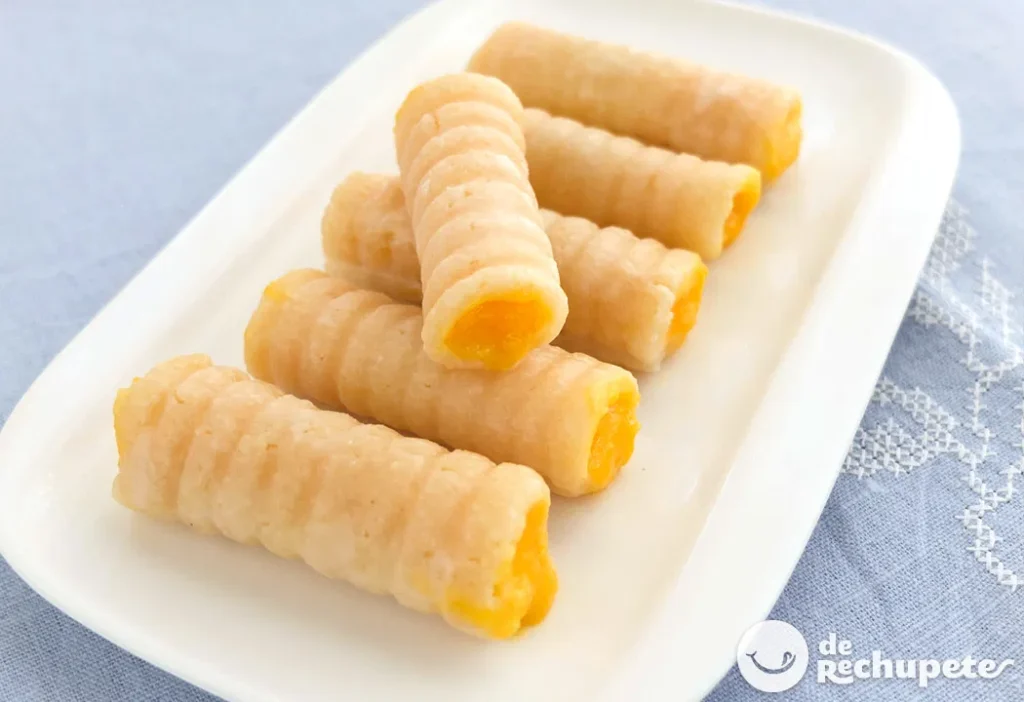
22) Huesos de Santo
Huesos de Santo, or Saint’s Bones, are traditional Spanish sweets often served on All Saints’ Day. They get their name from their bone-like appearance due to their white color and elongated shape.
These treats are made from marzipan, which consists of ground almonds and sugar. The marzipan dough is rolled into thin tubes resembling bones and filled with sweet egg yolk cream.
To make Huesos de Santo, you first prepare a simple syrup and mix it with the ground almonds to form the marzipan. Shape the marzipan into small tubes. Then, cook egg yolks with sugar to create a thick cream for the filling.
Once filled, the sweets are usually glazed with a syrup made from sugar and water. This gives them a shiny finish. These sweets are especially popular during the time around All Saints’ Day, but you can enjoy them year-round.
Huesos de Santo are a delightful and unique addition to Spanish dessert traditions. Their sweet flavor and neat presentation make them a favorite among many. Enjoy making and sharing these special treats with your family and friends!
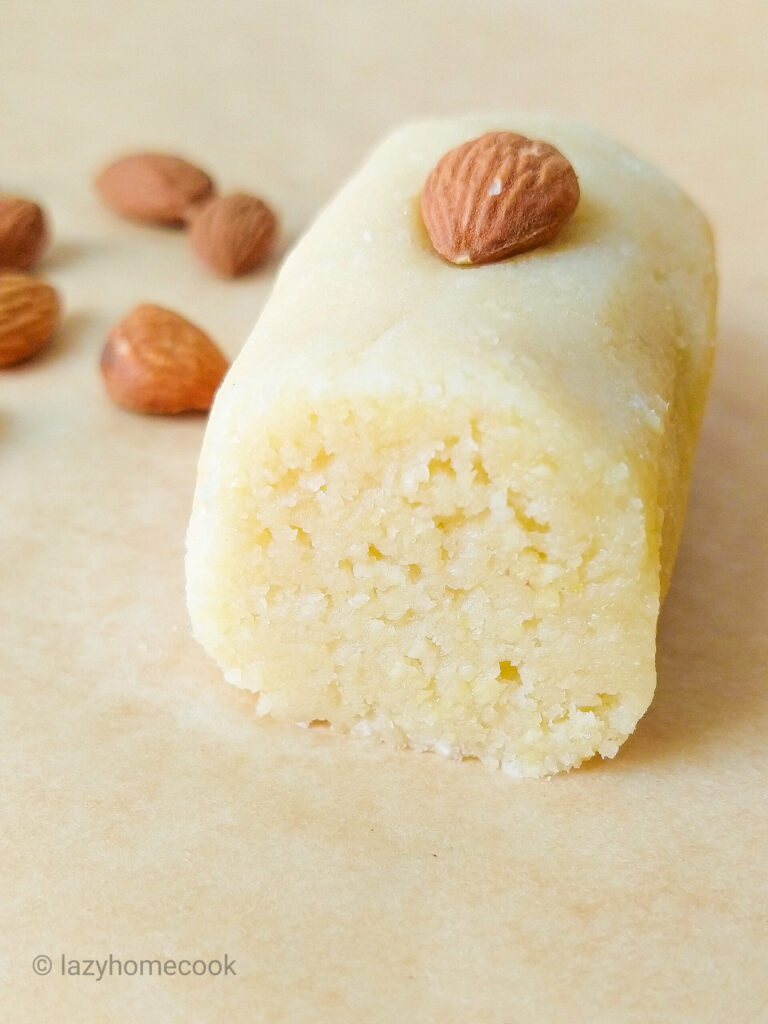
23) Marzipan
Marzipan is a chewy, sweet, and flavorful dessert made from almonds and sugar. It has a smooth texture and is often shaped into fruits, animals, or other fun shapes.
To make marzipan, mix almond flour with sugar and water. Some recipes add almond essence for an extra kick of flavor. Heat the mixture until it forms a thick dough.
Once the dough is ready, you can mold it into various shapes. You can also add food coloring to make the shapes more vibrant. After shaping, let the marzipan dry to harden a bit.
Marzipan is popular during holidays in Spain. It’s especially common during Christmas, where it’s used as a festive treat. You might also find it in cakes and pastries.
This dessert showcases the rich almond flavor while being versatile in its presentation. Whether shaped into mini fruits or simple logs, marzipan is both a treat for the eyes and the taste buds.
Making marzipan at home is fairly simple and doesn’t require many ingredients. All you need is almond flour, sugar, water, and an optional touch of almond essence. Enjoy this delicious Spanish dessert with friends and family, or use it to decorate your baked goods.
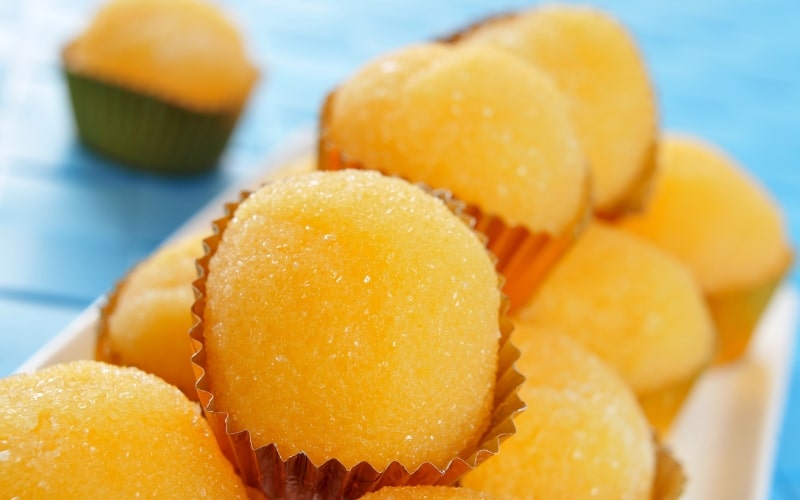
24) Yemas de Santa Teresa
Yemas de Santa Teresa, also known as Yemas de Ávila, are a sweet delight from Spain. This dessert has an interesting history, possibly dating back to medieval times in Andalusia. They are named after Saint Teresa of Ávila, a renowned Spanish mystic.
The main ingredient is egg yolks. You will start by separating the yolks from the whites. Simple syrup is made by boiling sugar with water. The cooled syrup is then carefully mixed with the egg yolks.
This mixture is cooked over low heat while being continuously stirred. It needs to be constantly watched to avoid sticking and burning. Once it thickens and starts to pull away from the sides, you know it’s ready.
After cooking, the thickened yolk mixture is left to cool. It is then formed into small, bite-sized balls. These balls are often rolled in powdered sugar to add a touch of sweetness and to make them look pretty.
Yemas de Santa Teresa are usually enjoyed during special occasions. If you love trying new desserts, this traditional Spanish treat is worth a try. Their rich, sweet taste and historical background make them a unique experience for your taste buds.
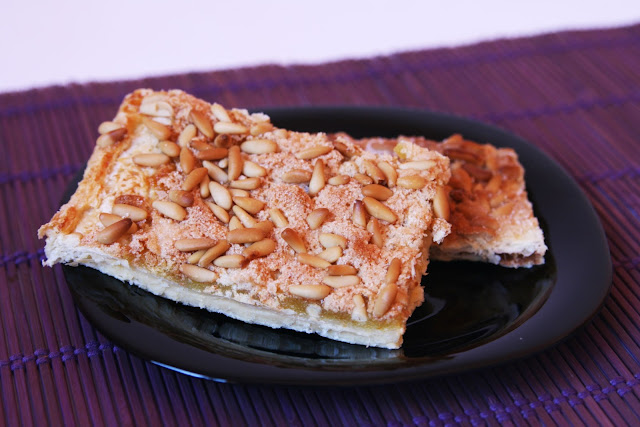
25) Coca de Llardons
Coca de Llardons is a traditional Spanish dessert from Catalonia. It’s a flatbread-like cake made with pork greaves (llardons), giving it a unique flavor and texture.
The ingredients for Coca de Llardons are simple. You will need wheat flour, baker’s yeast, eggs, sugar, olive oil, pork greaves, anise liquor, and pine nuts. The combination of these ingredients results in a delicious and distinct treat.
To start, mix the flour and yeast. Add the beaten eggs and sugar to the mix. Gradually incorporate the olive oil. Then, fold in the pork greaves and anise liquor.
Once the dough is ready, spread it out on a baking sheet. Sprinkle generously with pine nuts. Bake until golden and crispy.
Coca de Llardons is often enjoyed during festive occasions. Its rich taste and crispy texture make it a favorite among many. This dessert showcases the blending of savory greaves with sugary and aromatic elements for a balanced and satisfying bite.
Cultural Significance of Spanish Desserts
Spanish desserts are deeply rooted in the country’s history and vary widely across different regions, reflecting local ingredients and traditions.
Historical Background
Spanish desserts have a rich history that dates back centuries, influenced by diverse cultures such as the Moors and Romans. Many traditional recipes like Tarta de Santiago have been passed down through generations. This almond cake, originating from Galicia, has been a staple since medieval times.
Crema Catalana, similar to the French crème brûlée, dates back to the 18th century and highlights Spain’s culinary evolution. The use of local ingredients like almonds, honey, and oranges is a testament to Spain’s agricultural wealth and trade networks.
Regional Variations
Desserts in Spain often reflect the unique characteristics of their regions. For example, in Catalonia, you’ll find Crema Catalana, while Galicia offers Tarta de Santiago. Each region uses local ingredients to create distinctive flavors.
In Valencia, you can enjoy Turron, especially around the winter holidays. This nougat-like treat features almonds and honey. Andalusia is known for its variety of flans, incorporating ingredients like vanilla and coconut. These regional specialties showcase the rich diversity of Spanish culinary traditions.
Key Ingredients in Spanish Desserts
When exploring Spanish desserts, you’ll notice a mix of traditional and modern ingredients. They come together to create unique and memorable flavors.
Traditional Ingredients
Spanish desserts often rely on a few key ingredients that have been used for centuries. Almonds are prominent and appear in many treats like Tarta de Santiago. You might also find honey and sugar, especially in sweets like turron.
Eggs are critical, featuring in flan and crema Catalana, giving them their velvety texture. Traditional Spanish desserts also use olive oil instead of butter for a distinct flavor. Spices such as cinnamon and vanilla add warmth, often found in churros and custards.
Milk and cream are fundamentals, providing richness to many dishes. Flour is another staple, giving structure to cakes and pastries.
Modern Twists
While traditional recipes are beloved, modern Spanish desserts incorporate new ingredients and techniques. Dark chocolate has become a favorite, especially in flan variations and hot chocolate paired with churros. Coconut brings a tropical vibe to many classic recipes.
Using fresh fruits such as berries or citrus is common. For example, raspberries can accompany vanilla flan, enhancing its flavor and presentation. Alternative sweeteners like agave or stevia are also being used to appeal to health-conscious eaters.
There’s a trend towards using gluten-free flours, such as almond flour, to cater to dietary restrictions. Fusion elements like matcha or passion fruit can bring exciting new twists to age-old recipes.


